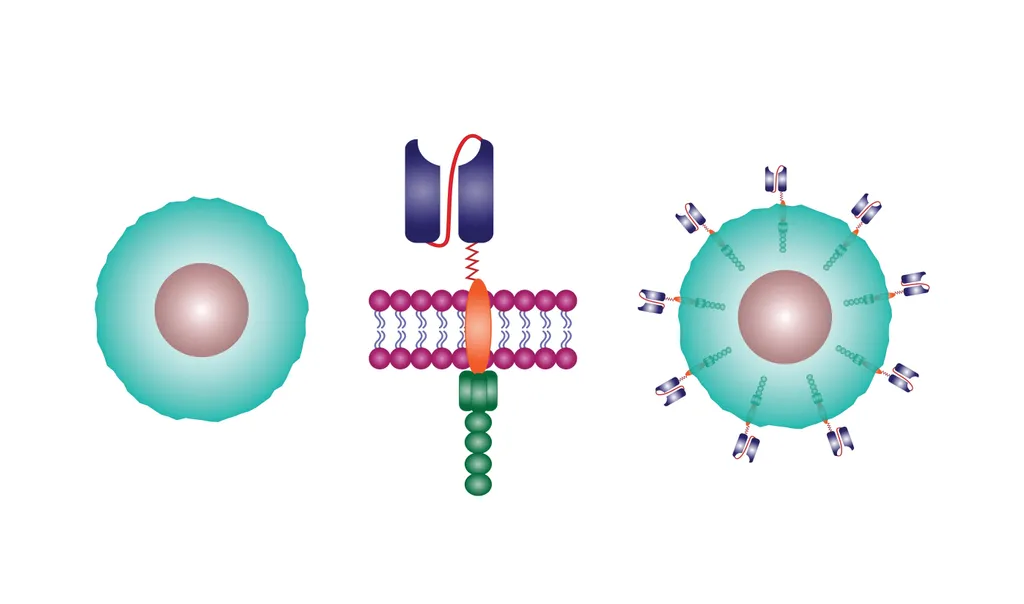EHA Congress 2022: Investigating Two New Treatment Strategies, Tamibarotene and Lanraplenib for AML with Dr. Eytan Stein

At the annual European Hematology Association Congress in Vienna, Austria this year, we met with Dr. Eytan Stein who is an attending physician on the leukemia service at Memorial Sloan Kettering Cancer Center in New York City. He also directs the program for drug development in leukemia, where he investigates new and exciting drugs that may help improve the lives of patients with AML. At the conference, he spoke with us about two projects he’s working on with drugs called tamibarotene and lanraplenib (LANRA).
Tamibarotene, also known as SY-1425, in combination with azacitidine and venetoclax is an exciting trial for Dr. Stein because it’s an opportunity to make the new standard of care for older adults with AML, azacitidine and venetoclax, more effective for certain patients.
Tamibarotene is a compound that targets a special abnormality that occurs in about 30% of patients with AML who have a retinoic acid receptor alpha (RARA) super enhancer, a genetic trait of AML that historically makes these patients less responsive to azacitidine and venetoclax.
Dr. Stein’s trial is investigating the effectiveness of this triplet combination in patients who are RARA positive with the hope that it will improve the outcomes for those patients that may not respond to azacitidine and venetoclax alone.
The name of Dr. Stein’s trial is the SELECT-AML-1 trial, and you can view it’s listing on our Clinical Trial Finder here. It is a phase 2 trial enrolling newly diagnosed patients who are RARA positive and are unlikely to tolerate standard intensive chemotherapy as their first type of treatment.
Dr. Stein moves on to discuss his second poster at the EHA Congress on his trial investigating the drug lanraplenib (LANRA) combined with the FLT3 inhibitor gilteritinib which is currently given as the standard of care for FLT3 positive patients. Researchers are trying to determine whether two drugs can be given together to target both of these mutations at the same time.
Dr. Stein hopes that by targeting both mutations at once, it will lead to better outcomes for patients with FLT3 and NPM1 mutations.
This trial is currently recruiting and enrolling patients who have FLT3 positive AML that has relapsed or become refractory to treatment. You can learn more about the open trial by viewing it’s listing on our Clinical Trial Finder here.
At the annual European Hematology Association Congress in Vienna, Austria this year, we met with Dr. Eytan Stein who is an attending physician on the leukemia service at Memorial Sloan Kettering Cancer Center in New York City. He also directs the program for drug development in leukemia, where he investigates new and exciting drugs that may help improve the lives of patients with AML. At the conference, he spoke with us about two projects he’s working on with drugs called tamibarotene and lanraplenib (LANRA).
Tamibarotene, also known as SY-1425, in combination with azacitidine and venetoclax is an exciting trial for Dr. Stein because it’s an opportunity to make the new standard of care for older adults with AML, azacitidine and venetoclax, more effective for certain patients.
Tamibarotene is a compound that targets a special abnormality that occurs in about 30% of patients with AML who have a retinoic acid receptor alpha (RARA) super enhancer, a genetic trait of AML that historically makes these patients less responsive to azacitidine and venetoclax.
Dr. Stein’s trial is investigating the effectiveness of this triplet combination in patients who are RARA positive with the hope that it will improve the outcomes for those patients that may not respond to azacitidine and venetoclax alone.
The name of Dr. Stein’s trial is the SELECT-AML-1 trial, and you can view it’s listing on our Clinical Trial Finder here. It is a phase 2 trial enrolling newly diagnosed patients who are RARA positive and are unlikely to tolerate standard intensive chemotherapy as their first type of treatment.
Dr. Stein moves on to discuss his second poster at the EHA Congress on his trial investigating the drug lanraplenib (LANRA) combined with the FLT3 inhibitor gilteritinib which is currently given as the standard of care for FLT3 positive patients. Researchers are trying to determine whether two drugs can be given together to target both of these mutations at the same time.
Dr. Stein hopes that by targeting both mutations at once, it will lead to better outcomes for patients with FLT3 and NPM1 mutations.
This trial is currently recruiting and enrolling patients who have FLT3 positive AML that has relapsed or become refractory to treatment. You can learn more about the open trial by viewing it’s listing on our Clinical Trial Finder here.

about the author
Katie Braswell
Katie joined HealthTree as the Community Director for AML in 2021 and became HealthTree's Director of Education in 2023. Katie is a registered dietitian who is passionate about health literacy and patient empowerment. She loves to cook, travel and spend time with her newborn son, husband and dog.
More on Clinical Trials

Get the Latest Acute Myeloid Leukemia Updates, Delivered to You.
By subscribing to the HealthTree newsletter, you'll receive the latest research, treatment updates, and expert insights to help you navigate your health.














